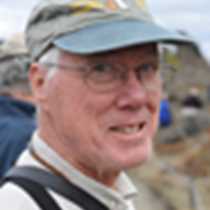A day spent in Paradise, Antarctica
It was a wise person why first observed that ... "You came to Antarctica for the penguins; you come back to Antarctica for the ice." It is ice that dominates my memories of this day, of this remarkable voyage to the west side of the Antarctic Peninsula. The west wind, blowing from the Bellinghausen Sea, brings an abundance of moisture to fall as snow. Accumulated over the years and compressed by the next winters' additions, the snow becomes ice. Ice moving downhill, under the combined influence of its mass and gravity, becomes a glacier. Ice calved from the face of glaciers forms icebergs of myriad sizes and shapes as they erode and decay, and the water returns to the sea from which it came. Add to that the remnants of last winter's sea ice forming flat floes that drift with the wind. Elsewhere on the earth one can travel to see ice, but nowhere else can one spend the day surrounded by ice, ever changing but always majestic.
We spent our morning in Neko Harbor, a small inlet of Andvord Bay. (It is named for a "floating factory" whale ship that moored here in the second decade of the 20th century.) It is on the Antarctic Continent itself, a mere 1,730 miles or so (as the skua flies) from the South Geographic Pole. Too far for us to walk before the last Zodiac whisked us to our buffet lunch, so we contented ourselves with a shorter climb to a scenic overlook of Andvord Bay, with Mount Française, the tallest mountain in the Peninsula region at 2,760 meters (just over 9,000 feet) looming on Anvers Island to the west. For many of us, it was our seventh continent, a notable lifetime geographic achievement. Gentoo penguins looked on and applauded our achievement with their raucous brays, or maybe they were thanking us for keeping on the people trails, leaving the penguin trails for their comings and goings. Some (people, not penguins) took the opportunity to paddle in our yellow, inflatable kayaks until a sudden rise in the wind (that happens in Antarctica) brought that activity to a close.
And then we entered Paradise ... Paradise Harbor, a glacier-lined basin between the continent to the east and islands to the west. It was probably paradise to the whalers (practical Norwegians, they) because of the protection it offers from the Antarctic winds, or maybe, like us, they were seized by rhapsody at the scenic beauty of the place. Zodiacs and kayaks were our tools of exploration. The water was glassy smooth, so every iceberg, every glacier-covered mountain slope was seen in near-perfect reflections that we explored with our cameras and our imaginations. Ice formed fairy castles and floating dragons, here a humanoid face, there an elegant swan, and elsewhere platforms for a South Polar skua and a leopard seal taking a break from its busy day chasing penguins, for leopard seals have to eat, too. Our water sports were interrupted by the arrival of Swedish Vikings. They turned out to be friendly and we enjoyed hot chocolate (with or without) as we drifted.




